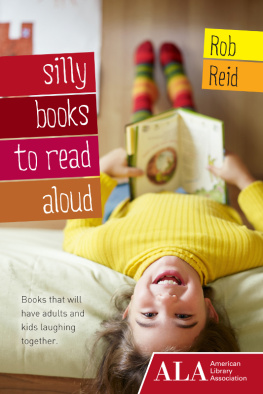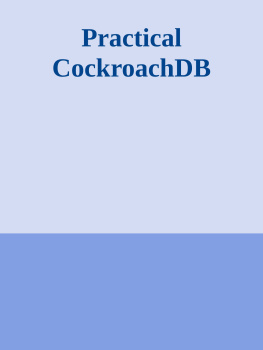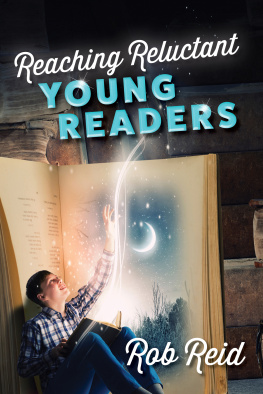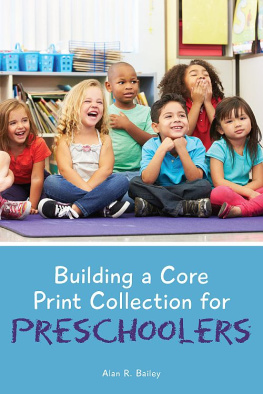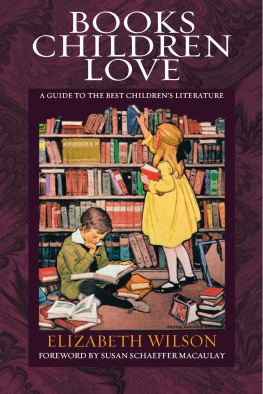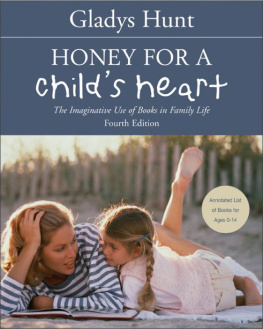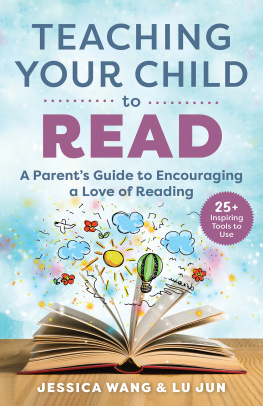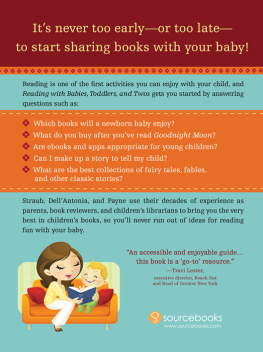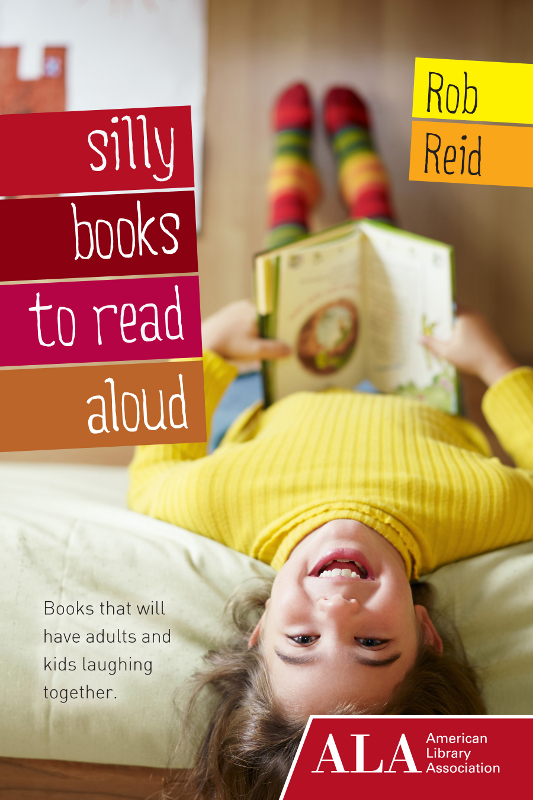Huron Street Press proceeds support the American Library Association in its mission to provide leadership for the development, promotion, and improvement of library and information services and the profession of librarianship in order to enhance learning and ensure access to information for all.
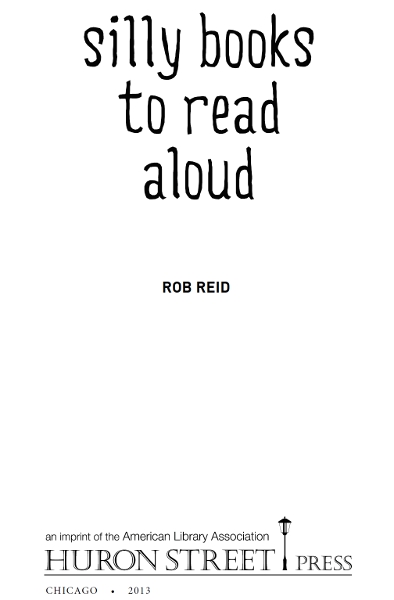
ROB REID, aka Rappin Rob, has entertained children and their families as a childrens humorist and storyteller for more than thirty years. His lively, participative shows feature storytelling, music activities, and wordplay. He is the author of more than a dozen books on childrens library programming, including Whats Black and White and Reid All Over? Something Hilarious Happened at the Library (American Library Association, 2012), as well as two picture books, Comin Down to Storytime (Upstart, 2009) and Wave Goodbye (Lee and Low, 1996). In between writing, performing, and teaching at the University of WisconsinEau Claire, Rob writes columns on childrens literature for LibrarySparks and Book Links magazine (a Booklist publication) and conducts workshops across North America, entertaining audiences with activities that make literature come alive for children.
2013 by the American Library Association. Any claim of copyright is subject to applicable limitations and exceptions, such as rights of fair use and library copying pursuant to Sections 107 and 108 of the U.S. Copyright Act. No copyright is claimed for content in the public domain, such as works of the U.S. government.
Extensive effort has gone into ensuring the reliability of the information in this book; however, the publisher makes no warranty, express or implied, with respect to the material contained herein.
ISBNs: 978-1-937589-10-3 (paper); 978-1-937589-17-2 (PDF); 978-1-937589-18-9 (ePub); 978-1-937589-19-6 (Kindle).
Library of Congress Cataloging-in-Publication Data
Reid, Rob.
Silly books to read aloud / Rob Reid.
pages cm
Includes bibliographical references and .
ISBN 978-1-937589-10-3 (pbk.)
1. Wit and humor, JuvenileBibliography. 2. Childrens stories
Bibliography. 3. Humorous storiesBibliography. 4. Childrens poetry
Bibliography. 5. Humorous poetryBibliography. 6. Picture books for
childrenBibliography. 7. Graphic novelsJuvenile literatureBibliography.
I. Title.
Z6514.W5R45 2013
[PN1009.A1]
011.62dc23
2012021523
Cover design by Casey Bayer. Cover image Diego Cervo/Shutterstock, Inc., with illustrations courtesy Khrobostova/Shutterstock.
For Wesley
Contents
Read like a wolf eats.
Gary Paulsen
I HAVE FOND memories of reading aloud to my four children. These memories are incredibly important to me. We plowed through Roll of Thunder, Hear My Cry by Mildred Taylor, Shiloh by Phyllis Reynolds Naylor, the Chronicles of Narnia series by C. S. Lewis, Charlottes Web by E. B. White (with Dad sniffling at the end), and Where the Red Fern Grows by Wilson Rawls (with Dad crying outright at the end), to name just a few.
I have a particularly strong memory of reading the fourth Harry Potter book (Harry Potter and the Goblet of Fire) to my son Sam when he was ten years old. We had been reading a few chapters every night for a few weeks. One night, around 9 p.m., after reading for an hour and with a few hundred pages left in the book, we reached a point in the story where the two of us looked at each other and knew we were going to finish it that night (luckily there was no school the next morning). We kept going, losing ourselves in the world of Hogwarts. I finished reading at midnight. My voice was gone. We had started on the couch but somewhere along the line had moved to the floor. I read the last word, and, with our heads butting up against the bottom of a rocking chair, we both quietly said, Whoa. That memory is burned into my brain.
I have other wonderful memories of reading picture books with Sam and his older sistersLaura, Julia, and Alicebefore him. Some favorites were Many Moons by James Thurber, Sylvester and the Magic Pebble by William Steig, The Clown of God by Tomie DePaola, Millions of Cats by Wanda Gg, A Story, a Story by Gail Haley, The Relatives Came by Cynthia Rylant, and dozens of Berenstain Bears books.
The silly books, however, had a special place in our family. We read funny chapter books: Matilda by Roald Dahl, the Ramona series by Beverly Cleary, the McBroom books by Sid Fleischman, and Winnie the Pooh by A. A. Milne. We read funny picture books, such as Miss Nelson Is Missing! by Harry Allard, The Wolfs Chicken Stew by Keiko Kasza, Moiras Birthday by Robert Munsch, and all of those hilarious books by Dr. Seuss. And not only his picture books, but his easy readers, too, like Green Eggs and Ham. We even read silly poetry by Shel Silverstein and Judith Viorst.
I went on to read hilarious books to other peoples children. In my roles as a middle school English teacher and as a childrens librarian, I had a constant flow of built-in audiences of preschoolers, elementary school children, and middle school students for decades. And humor won them over every time. I read them picture books like the ones I shared with my own children. When my kids got older, I still got to read picture books with my new audiences. We read funny works by Eric Kimmel, Jon Scieszka, Jules Feiffer, and Kevin Henkes. I read them passages from the Junie B. Jones books by Barbara Park as well as Lois Lowrys Sam series. Today, I still get to visit schools and libraries and share newer humor authors, like Doreen Cronin and Mo Willems. I also read these gems to my college students, who are our future teachers, librarians, and parents. And now I have the pleasure of starting all over again with my grandchildren.
I think its important for parents and educators to read aloud to children of all ages. There is a general misconception that when children have learned to read, adults should stop reading to them. Jim Trelease, in his wonderful book The Read-Aloud Handbook (6th ed., Penguin, 2006), offers page after page of evidence on the benefits of reading to children of all ages and thus improving the likelihood that they will become lifelong readers. Trelease goes on to show how this helps our society and our country. I like to emphasize that reading aloud to children of all ages makes lifelong readers, lifelong library users, and lifelong learners.
In this guide, you will find descriptions of some of my favorite humorous childrens books currently in print and available for purchase at major bookstores. Availability was one of my criteria for including a book in this guide. Some of the companion books listed with these titles may be out of print but, in this age of online used bookstores, it shouldnt be too hard to find these, too. The books are organized by format: picture books, easy readers, chapter books (fiction), poetry collections, and graphic novels and manga (a Japanese graphic novel style that is very popular with American kids).
Picture books work well with preschoolers and primary grade students (K2). Many picture books contain several layers of humor and thus appeal to a larger audience. Often lines are aimed at adults, such as famous movie lines like You had me at hello and Heres looking at you, kid, in the picture book

